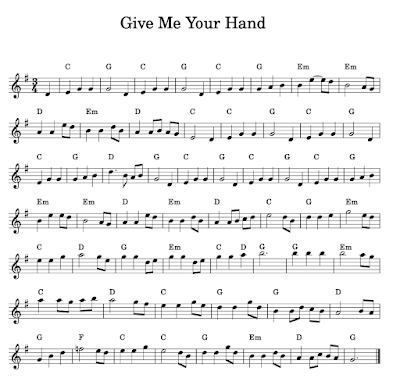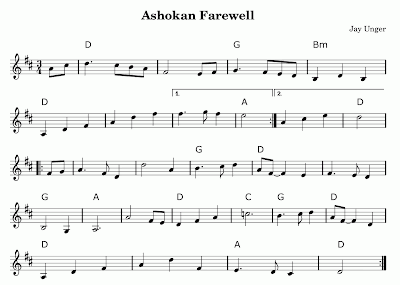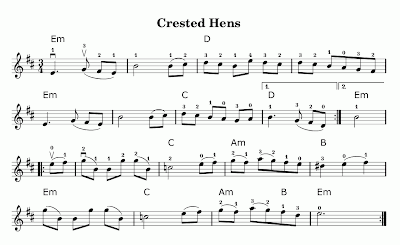Listen to the Fiddle Studio Podcast on Apple or on Spotify!
Welcome to the Fiddle Studio Podcast featuring tunes and stories from the world of traditional music and fiddling. I'm Meg Wobus Beller and today I'll be bringing you a setting of Waltz for Charley from my album Broke the Floor by Meg Wobus and Charley Beller.
Hello everyone, I hope you are well. Today we're going to be talking about pairing fiddle tunes and putting together sets of tunes. But before we talk about putting tunes together into sets, a word in defense of just playing the same tune over and over again. So this isn't completely unknown in the world of fiddling. If you go to a square dance or an old time jam, you'll hear people playing just one tune, focusing on that tune.
I do think there's something in our modern culture where people aren't really used to just doing the same thing for a long time in kind of a meditative way. They're in a hurry, they're anxious to get on to the next thing. And I'm fiddling that can be like let's get on to the next tune. But if you can relax into the repetition of playing a tune 10 times or 20 times, you can find things. I think you can find things in it that you might not notice just from playing it once.
Sometimes, I'm Jewish, and sometimes on the Sabbath, on Shabbat, we will sing songs that go on, either have lots and lots of verses or wordless melodies that you sing many, many, many times, like you would play a tune at a square dance, and it can kind of shape to just do the same thing again and then do it again, and then do it again. But once that itchy I'm getting tired of this feeling goes away, for me it can be really beautiful and transformative.
I've read about how some art teachers will have their students just stare at the same piece of art for like 30 minutes or an hour and that as soon as they stop feeling antsy about it, they'll start to notice things. And I find this if I'm like watching the sunrise, which you think, oh, I'm gonna watch the sun rises, oh my gosh, it takes forever. But then I'll keep noticing like, oh, there's a bird flying there now, or now there's a little house I didn't see on that hill over there before.
So I think when you play tunes over and over again and you're not in a hurry to get to another tune, you can start to, yeah, change your experience with a tune or notice new things about it. It's not necessarily bad, but that's not actually what I was gonna talk about. I was gonna talk about putting tunes together, so let's do that.
Okay, start with dance sets. So when I was growing up, tunes went in sets. I didn't ever go to an old time jam. I didn't ever play tune 10 times in a row. I put the tunes together into sets for contra dances. You know, working with my dad or with a band in college when I got a little older, you play the tunes five or six times at the dance and go to the next tune.
If you're putting tunes together that way for a contra dance, often the first tune is a little simpler, because the dancers are hearing the moves called out initially and you don't want them necessarily trying to parse what the caller is saying to do while also hearing this really, really complicated tune. Then you go into the second tune and you always kind of wanna bring the energy up a little bit, unless you're going for something really dramatic and decreasing energy in the middle of the set not sure why you would do that and then at the end of the set you'd either bring the energy up again or maybe end with like a big expansive sort of finishing sounding tune, and the key is usually up. It either goes up a fourth or a whole step or it can go from minor to major.
So a really common order of keys for like a three-tune set would be tune in D and then G and then A. I mean, if we're just talking about sets for contra dancing, I also look at the personality of a tune. I like to match up tunes that have a similar personality, like maybe a tune that sounds a little bit like a rag or a very kind of smooth Irish sounding tune, with more tunes like that. Or even look at the personality of the A part and the B part separate. You know, if the A part is marchy and then the B part is kind of syncopated, then I might look for other tunes like that so that when they're playing the second half of the dance they'll have the syncopated beat to dance against and that that will remain even when the tune changes throughout the dance.
You can really get into the weeds about how individual parts of the tune will fit. Certain dance moves, like where the balances are forward and back down the hall for more marchy things. Playful moves like a California twirl is a dance move. Sometimes I look for a more playful tune. There's, of course, the Hay for four, which people go back and forth. Some people like a real dark, brooding tune for Hey for Four. Becky Tracy said she loves sweet marches for Hey for Four.
So for me, for matching up tunes, I have this huge spreadsheet with all my tunes and then there's all these different rows and it's like how does the A part feel? Where's the balance? How does the B part feel? What is the whole tune driving, or is it smooth, or is it syncopated? And then I'll look at that and look at all the sort of characteristics of the tune.
And it doesn't even matter necessarily, for Contra Dance is how the two tunes fit together, cause you can always make them fit. It's a little more about matching up so that the the whole dance, even though the tune changes, that the feel of the dance will be kind of the same, or it'll be how you want it to be. If you want to start kind of dark and brooding and then open up to something big and beautiful at the end, that you have control over that through the tunes that you pick. Ooh, you could talk about that for a while.
If I'm just playing like a concert or basically just stringing tunes together, you know, playing them in a church or for friends, kind of casually. I don't certainly don't play a tune six times through for that. Maybe just play it twice and I'll mix up the type of tune more. They do this in Cape Breton too. They'll start with the slowest, you know, a waltz or an air, and then go into a hornpipe, maybe in the same key, a jig in the same key, a reel in the same key.
So the feel of the tune is changing but the key is staying the same. Sometimes they'll just have a bunch of tunes just once in a row. It can be a whirlwind listening to a whole long Cape Breton set. Oh, my goodness For a concert setting. I'll look to that to mix things up more, not just play three reels but try to have another type of tune in there.
If you're thinking about Irish sessions, sets are big in Irish music I've talked about this before there's some sets. Everybody knows If you go on the session there's a whole section just with sets. People add in the sets that they like and I do feel like Irish players put together jigs with jigs, hornpipes with hornpipes. So they're not mixing like Cape Breton. The types of tunes and the key will change each. Ah, does it change each time? I was going to say the key will change each time, but some of the sets they don't.
I remember hearing Kevin Burke talk about this and that he had done a set that was all. Maybe it was all A minor and the Abbey was part of it. And then somebody complained to him, said oh, you can't play, you can't play all in the same key, and he was like that made me want to do it. I made a big old set all the same key. It was funnier when he told the story, but anyway, often they're in a different key. So three tunes all the same type of tune but three different keys.
And I think my impression since I'm not, you know, born and bred Irish musician is that Irish players are very into how the end of the tune fits with the beginning of the next tune and kind of fitting them together and then the general feel of the tune. But you won't really hear them talking about like, where's the balance, where's the like, the specific parts that might fit dances, because with Ceilis and everything, and of course in a session there's not usually somebody dancing and they're not thinking about that as much so it's a little more about getting a really beautiful transition into the next tune. The way they fit together, that's just my impression. Anyway, put some, put some sets together. Let me know how it goes.
Our tune for today is Charley's Waltz. I wrote this Waltz for my husband, Charley, and I was camping not with Charley, actually, just by myself in a cabin off the AT the Appalachian Trail in Maryland called Bear Spring Cabin and I was playing around with the melody for the A part. I didn't start off thinking I was writing this tune for Charley, but when I got to the B part, which starts with some long notes, it made me think about dancing with Charlie, maybe because there's a Waltz with very long notes by Keith Murphy called Evergreen. That was our wedding Waltz.
But yeah, as I was playing the B part, I was just imagining dancing with Charlie. Charlie and I have danced a long time. We actually met on the dance floor so in contra dancing. Both of our parents were folk dancers and involved in the folk music community, so we dance a lot and I thought about it. So I named the Waltz after him and I'm pretty, pretty proud of this tune.
I've gotten the my scale of if I've written. A good tune is. One is if other people want to play it and ask for the music or I hear them play it, and another is is I like it? People say, oh, did you, you wrote that? Who wrote that? Did you write that? That's usually a good sign Making a tune that sounds really like settled, like it's been there a while Maybe it has, who knows. So yeah, we're going to hear Waltz from Charley. This is from my new album called broke the floor.








